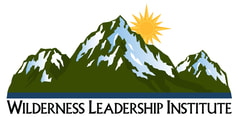Snowpack Summary February 10, 2023
Posted by Allen Giernet @ 6:38 am (this summary expires in 24 hours)
This summary applies to backcountry areas only.
The Bottom Line –
Wet Loose avalanches will become likely today at all elevations as the day warms significantly on Easterly to South through Westerly aspects in that order. With progressively warmer days each day since Monday wet snow instability will remain on our list. Firm snow becoming soft and unsupportable, roller balls from rock outcroppings and pinwheels, boots sinking into boot top depth are all signs of wet snow instability. If you encounter these conditions move out of the area quickly to avoid being caught in a wet loose slide. Firm snow surfaces will be likely for the early morning hours until sun and heat softens the snow. Be prepared for fast firm conditions and expect variable surface conditions.
Please share your observations with us at the avalanche center Submit Reports page.
Posted by Allen Giernet @ 6:38 am (this summary expires in 24 hours)
This summary applies to backcountry areas only.
The Bottom Line –
Wet Loose avalanches will become likely today at all elevations as the day warms significantly on Easterly to South through Westerly aspects in that order. With progressively warmer days each day since Monday wet snow instability will remain on our list. Firm snow becoming soft and unsupportable, roller balls from rock outcroppings and pinwheels, boots sinking into boot top depth are all signs of wet snow instability. If you encounter these conditions move out of the area quickly to avoid being caught in a wet loose slide. Firm snow surfaces will be likely for the early morning hours until sun and heat softens the snow. Be prepared for fast firm conditions and expect variable surface conditions.
Please share your observations with us at the avalanche center Submit Reports page.

Loose Wet avalanches are the release of wet unconsolidated snow or slush. These avalanches typically occur within layers of wet snow near the surface of the snowpack, but they may quickly gouge into lower snowpack layers. Like Loose Dry Avalanches, they start at a point and entrain snow as they move downhill, forming a fan-shaped avalanche. Other names for loose-wet avalanches include point-release avalanches or sluffs. Loose Wet avalanches can trigger slab avalanches that break into deeper snow layers.
General Summary
#1 Wet loose avalanche – Progressively warmer days since Monday with today being the warmest this week will make wet loose snow instability likely. This concern will begin at the lower elevations early and become possible at the higher elevations. Rapid warming through the morning especially on NE, E, SE, S, SW, W, & NW aspects through the day will increase this problem. Slopes with significant sun input will be the most likely for this problem to develop. Watch for signs of wet snow instability, firm snow becoming unsupportable, roller balls and pinwheels emanating from rock bands and outcroppings and boots sinking into boot top depth. These are all signs of Wet snow instability. Start early and finish early to avoid these conditions. Though these avalanches will not likely bury you they can take you for a nasty ride with catastrophic consequences into terrain traps, over drop offs and into to trees. Be aware of what is below you as you travel. If snow is unsupportable move to slopes <30° or terrain sheltered from the direct effects of the sun. Warming will happen quickly today and with overnight lows near or above freezing last night snow will transition quickly. Be mindful of rapidly changing conditions.
Fast Firm conditions will be possible on all but the most sheltered northerly aspects in the morning. Following warmer day time temps with overnight freezes for the past few days firm surface snow will be likely. These conditions are the cause for most incidents in our local mountains. Be prepared for quickly changing snow surfaces as you travel and have the proper equipment (ice axe and crampons) with the skills to use them. Avoid steep slopes if you are not prepared for this type of travel and choose low angle terrain. Turn around before you get into a situation you can’t retreat from.
Exercise caution if venturing out into the mountains and use avalanche protocols, travel with a partner and bring your beacon, shovel and probe.
Weekend Outlook - Cooling for Saturday with a slight chance of snow Saturday evening into Sunday. Freezing day time Temperatures are forecast for Sunday. This will bring firm conditions for Saturday into Sunday with potential for fast firm snow surfaces. Plan your days accordingly and be prepared for changing conditions.
Please share any information when you are out in the mountains. Even a photo is helpful. Submit observations to Submit Reports page.
#1 Wet loose avalanche – Progressively warmer days since Monday with today being the warmest this week will make wet loose snow instability likely. This concern will begin at the lower elevations early and become possible at the higher elevations. Rapid warming through the morning especially on NE, E, SE, S, SW, W, & NW aspects through the day will increase this problem. Slopes with significant sun input will be the most likely for this problem to develop. Watch for signs of wet snow instability, firm snow becoming unsupportable, roller balls and pinwheels emanating from rock bands and outcroppings and boots sinking into boot top depth. These are all signs of Wet snow instability. Start early and finish early to avoid these conditions. Though these avalanches will not likely bury you they can take you for a nasty ride with catastrophic consequences into terrain traps, over drop offs and into to trees. Be aware of what is below you as you travel. If snow is unsupportable move to slopes <30° or terrain sheltered from the direct effects of the sun. Warming will happen quickly today and with overnight lows near or above freezing last night snow will transition quickly. Be mindful of rapidly changing conditions.
Fast Firm conditions will be possible on all but the most sheltered northerly aspects in the morning. Following warmer day time temps with overnight freezes for the past few days firm surface snow will be likely. These conditions are the cause for most incidents in our local mountains. Be prepared for quickly changing snow surfaces as you travel and have the proper equipment (ice axe and crampons) with the skills to use them. Avoid steep slopes if you are not prepared for this type of travel and choose low angle terrain. Turn around before you get into a situation you can’t retreat from.
Exercise caution if venturing out into the mountains and use avalanche protocols, travel with a partner and bring your beacon, shovel and probe.
Weekend Outlook - Cooling for Saturday with a slight chance of snow Saturday evening into Sunday. Freezing day time Temperatures are forecast for Sunday. This will bring firm conditions for Saturday into Sunday with potential for fast firm snow surfaces. Plan your days accordingly and be prepared for changing conditions.
Please share any information when you are out in the mountains. Even a photo is helpful. Submit observations to Submit Reports page.
General Mountain Weather Forecast |
Weather Page Link
Click on the links below for the latest information
Click here for this Season's Snow Pack Summaries
To better understand the challenges and potential variability over the large area we are producing information for please read our Snowpack Summary - Format and Limitations
Disclaimer:
This Bulletin is designed to generally describe conditions where local variations always occur. Travelers are advised to exercise caution and make slope specific evaluations. As always, please treat this bulletin with appropriately guarded skepticism and make your own assessments. Help to provide more information to the community by reporting your observations
This Bulletin is designed to generally describe conditions where local variations always occur. Travelers are advised to exercise caution and make slope specific evaluations. As always, please treat this bulletin with appropriately guarded skepticism and make your own assessments. Help to provide more information to the community by reporting your observations
Latest Observtions
Click on the observation to go to the full report
|
Observation type
Snowpack Location - Mt. Charlton Date (yyyymmdd) -20230203 Comment Edgeable snow on Charlton’s couloirs, wet powder in the trees. We switched out of our skins and put on crampons 1000’ below the summit. Wind scouring on the summit but no wind loading observed on Charleton. No slide for life conditions found after 12, before 12 it definitely could have been suspect. No natural pinwheels observed but pinwheels did form from our skin track. Recent D1 wind slab avalanches observed all across Jepson’s northwest to north facing bowl just below the ridge line. A D2 sized wind slab avalanche observed on the northwest face in the Big Draw bowl below the ridge line. |
Observation type
Snowpack Location - Big Pines Date (yyyymmdd) - 20230131 Comment - Sunrise tour on Tuesday 1-31 following the Sun-Mon storm cycle. Approx 15-20cm of cold, low density (for socal) fell total above 7000ft (likely more above 8500'), mostly on a surface of firm melt/freeze crust. Temp was 15F at 7k at 0700, colder as I went higher. Temps are in the high 20s at 6400' as of 12pm Tuesday. E-NE winds were blowing steadily as I reached a N-S ridgeline, where sastrugi (see photo) and snow transport was evident. Turns down the adjacent 30deg W-NW slope were as enjoyable as anything this year. Snow was soft, cold, and right side up; did not scrape or hit bottom once. However, small pockets shallow wind slabs were forming on the lee side of the ridge (see photo), but did not propagate beyond my ski tips. I suspect higher elevation and more wind loaded areas will be of greater concern. Coverage is looking pretty good at the moment, and it will be interesting to see how the projected dry spell affects the current snowpack in the days ahead. |
Observation type
Snowpack Location - San Gorgonio Date (yyyymmdd) - 20230129 Comment - Comment Put skins on at about 7,250' Toured up to 10,000' above Dry Lake towards San. G. We encountered refrozen top surface on some aspects but generally better than what we expected. Some soft snow was definitely to be had. We observed some shooting cracks and hollowness as we ascended a small gully up to 10,000 on the N facing flanks below San. G. We observed strange wind affected avalanche debris above us on N. aspects of San. G. We saw many very clear avalanche crowns on the cirque around Jepson Peak. |
Observation type -
Snowpack Location - San G Wilderness/ Jepson Date (yyyymmdd) - 20230121 Comment - We dug the pit on a NNE aspect with visible wind deposits to get an idea of the conditions in the Jepsen chutes. The rain crust that we found at about a meter depth in the pit location was exposed in some wind-scoured locations. Top 10 cm were a hard wind slab with fracture propagation on isolation. For the rest of the snowpack ECT resulted in no fracture. Total snow depth: 305 cm Snow pit: Pencil 0-5 cm Knife to 30 cm 4 Fingers grains to 70 cm Thin ( Finger to 90 cm Knife to 100 cm Loose layer (~1 cm thickness) at 105 cm Pencil to 145 cm Knife to 150 cm Pencil to 200 cm rain crust (2.5 cm thick) at 200 cm Pencil to fingers to 290 cm 4 fingers to 295 cm, ECTPV weak layer at 295 knife 295 to 305 --> 10 cm think wind slab, fracture propagating on isolation (consistent with small releases observed on leeward N-NW aspects below jepsen ridge) Snow temperature was -9C at 15cm below the surface, with a temperature gradient of less than 0.5C / 10cm. |
General Caution
You should always use safe terrain management and carry avalanche rescue equipment in the backcountry. Most avalanches are triggered by someone in the party or the victim. Practice with your rescue gear often and be prepared should the worst happen. Though we do not have an avalanche forecast center in this area as of yet, the information posted and shared here as well as the resources available on this site will help to make informed decisions for your backcountry travels. Use avalanche forecasts in your travels wherever available and be aware that avalanche ratings are general information. Elevation, location, geographic variability’s, slope aspect and angle all have effects on the particular area you travel in. This is only one piece of the information you should use in your decision making process. There is no substitute for avalanche education, for more resources and information as well as education please refer to our resources page.
You should always use safe terrain management and carry avalanche rescue equipment in the backcountry. Most avalanches are triggered by someone in the party or the victim. Practice with your rescue gear often and be prepared should the worst happen. Though we do not have an avalanche forecast center in this area as of yet, the information posted and shared here as well as the resources available on this site will help to make informed decisions for your backcountry travels. Use avalanche forecasts in your travels wherever available and be aware that avalanche ratings are general information. Elevation, location, geographic variability’s, slope aspect and angle all have effects on the particular area you travel in. This is only one piece of the information you should use in your decision making process. There is no substitute for avalanche education, for more resources and information as well as education please refer to our resources page.






















